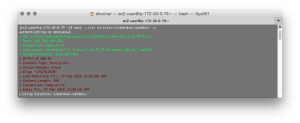

This will recursively upload the files and sub-directories. Once connected, you can drag-and-drop the top-level directories into the S3 bucket. In the 'Remote Directory" field, enter the S3 bucket name In the "Host" field, enter "s3.Įnter the Access Key ID and Secret Access KeyĬlick "Directories" (in the "Environment" section) In the New site dialog, select Amazon S3 protocol You can now drag and drop files from your computer onto this window to upload them. You will now see your S3 bucket folders listed. Secret Access Key: Enter the Secret Key you have generated or that we have provided to you.ĭouble-click on the new connection now shown in the list

Server: leave as-is (should say s3.)Īccess Key ID: Enter the Access Key you have generated or that we have provided to you. In the drop-down menu at the top of the window that appears, choose "Amazon S3" In the menu bar, click "File", then "New Browser"Ĭlick the "+" symbol in the bottom left to create a new bookmark (connection) to your S3 bucket How to connect to your account with Cyberduck To access your account via FTP with Cyberduck, open the application and click the Open Connection button. If you prefer, we can create a temporary bucket for you, just get in touch and we'll be happy to help.ĭownload and install Cyberduck, a free tool that will let you access an S3 bucket from your desktop. To upload the files into an S3 bucket we recommend using a desktop tool that will preserve the directory structure and will recover if your network connection is interrupted.įirst you'll need to have created an S3 bucket to upload to.


 0 kommentar(er)
0 kommentar(er)
